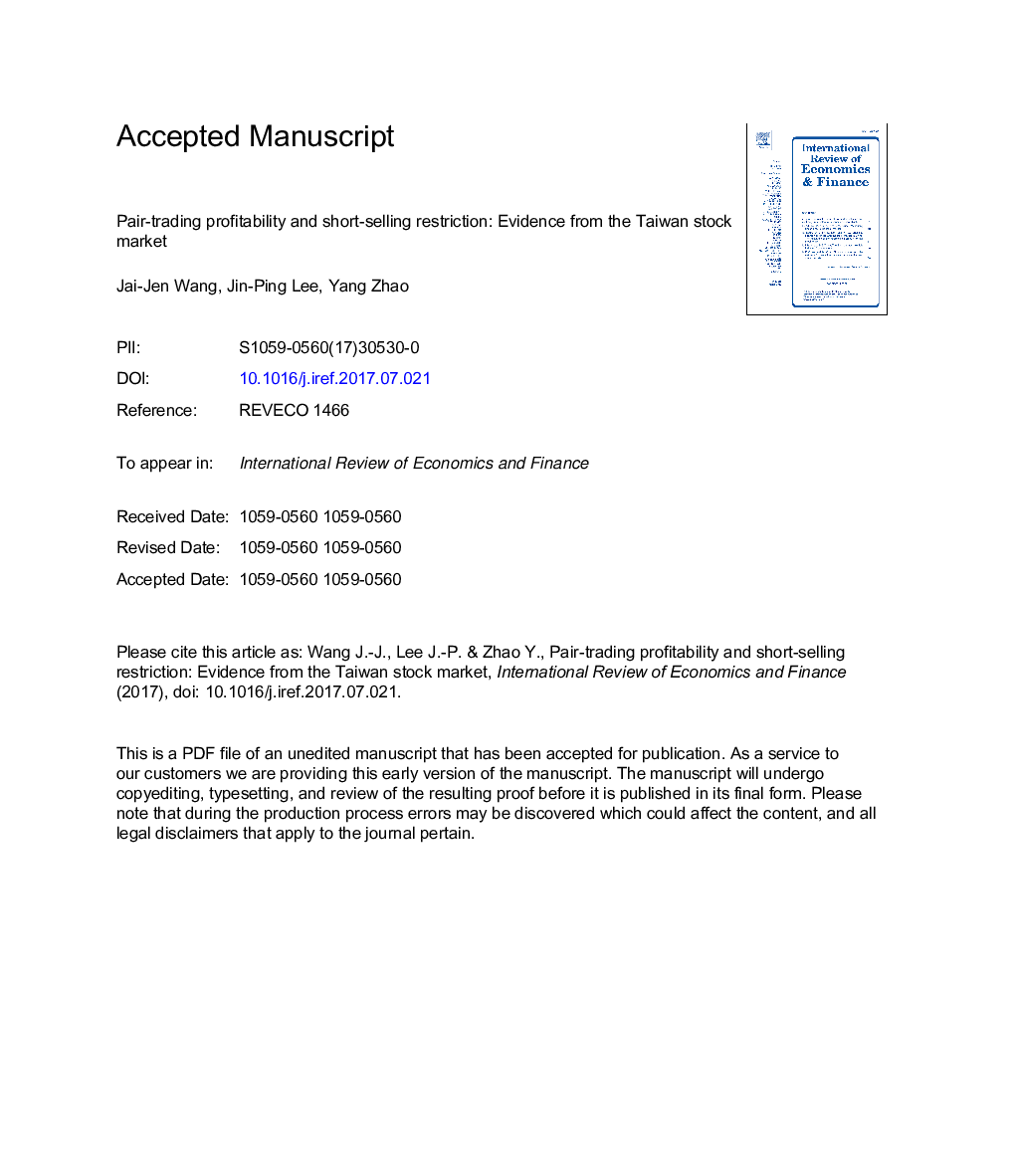| Article ID | Journal | Published Year | Pages | File Type |
|---|---|---|---|---|
| 7355430 | International Review of Economics & Finance | 2018 | 35 Pages |
Abstract
This paper examines the profitability of a pair-trading strategy in the Taiwan stock market while considering alternative frequency-distance filters, thresholds for opening a pair trade relationship, reinvestment mechanisms, different lengths of trading period, industry boundary, and the short-selling restriction. In contrast with the recent literature showing that pair-trading strategy returns are insignificant and negative in the Taiwan stock market, we find that the profitabilities of pair trades developed by positions in the Taiwan 50 Index during 1990/1-2016/3 present significant annualized mean returns of 1.84%-3.04%. Moreover, thresholds with different stringent degrees, industry boundary, and alternative reinvestment mechanisms are unable to help pick out more profitable pair-trading portfolios. The distance filter and shorter trading-day setting are more reliable for pair trading. Finally, the deregulation on short selling results in more pair-trading activities, which obviously diminish the profitability of a pair-trading strategy.
Keywords
Related Topics
Social Sciences and Humanities
Economics, Econometrics and Finance
Economics and Econometrics
Authors
Jai-Jen Wang, Jin-Ping Lee, Yang Zhao,
